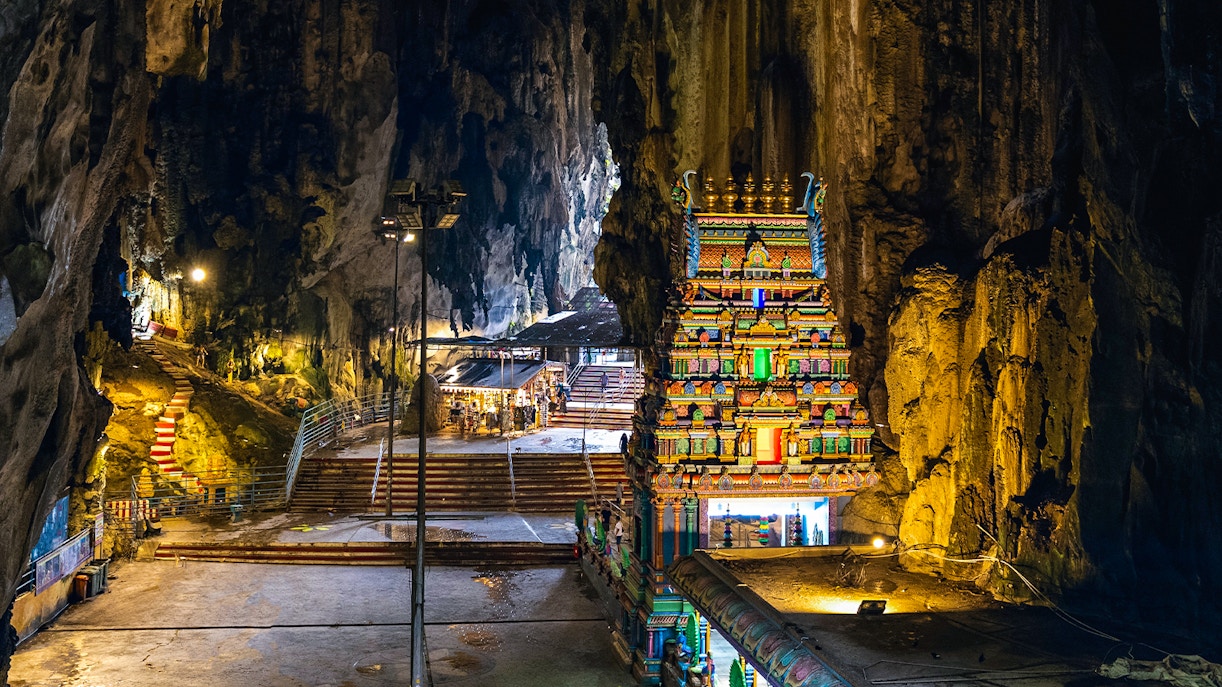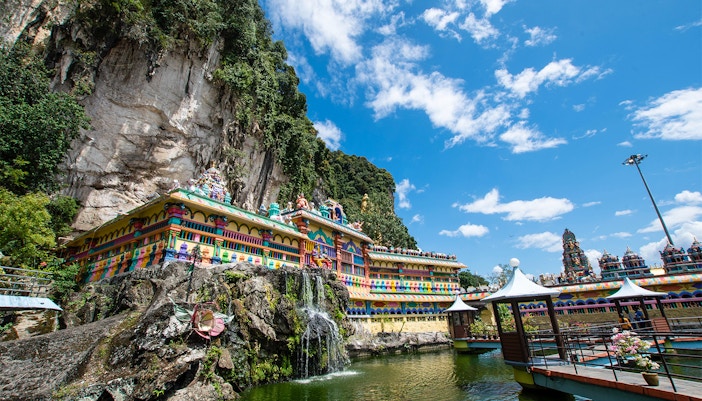The Dark Cave begins at about 75% up the 272 rainbow-colored steps, on the left side. It’s part of a 156-hectare limestone tower karst, with over 2 km of known passages and six large chambers. Only 450 meters are open to public tours; another kilometer is reserved for adventure tours. Strict visitor limits and guided access keep its delicate ecosystem intact.




